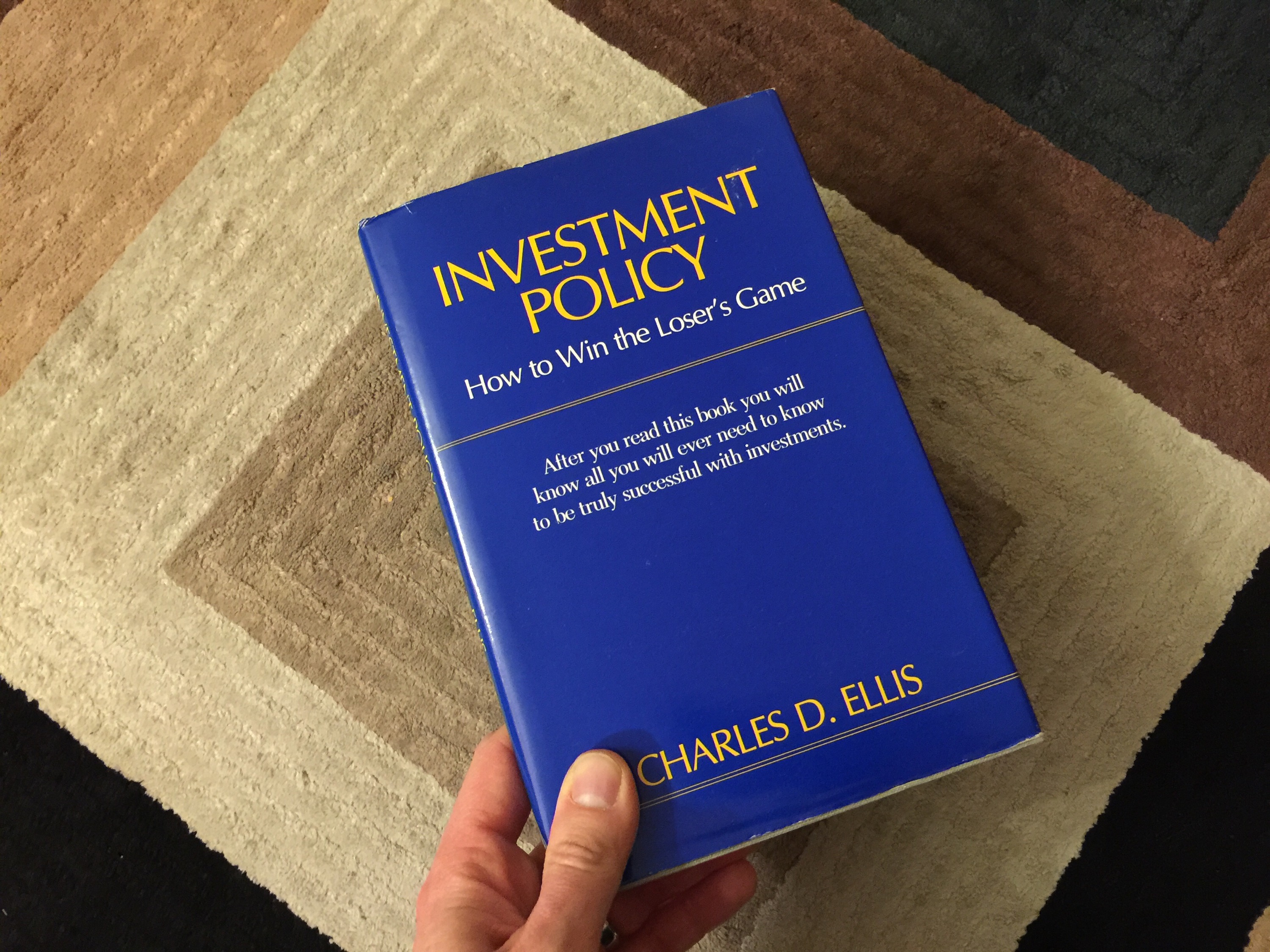Book summary. (Not investment advice)
Notes on Charles D. Ellis’ 1985 (1st) edition of Investment Policy. I borrowed the 1st edition of the book from my father in law. Currently Amazon is selling the 2nd edition of the book.
Loser’s game is where the winner wins by making less errors than the loser. For example tennis or golf. In tennis the winner generally wins by making fewer unforced errors and having forced more errors on the opponent. In golf the winner is generally the player that makes less errors. Market investing is a losers game too. At least 75% professionally managed funds underperform P&P 500 stock market average. Index funds generally outperform most investment managers over long time periods.
There are four investment vectors:
- Timing – sell high and buy low. Not effective way to beat average over time. Needs 75% accuracy just to break even.
- Stock selection – also not useful or profitable way to beat market average over time.
- Portfolio structure or strategy – not good as well. Requires investor to discover new unfamiliar ways to invest as markets shift, become proficient in new way only to abandon it for a new way again.
- Investment concept/philosophy – develop insight into a specific sector/market/industry and exploit it. Requires commitment through cycles.
Largest part of return comes from buying the market. Inexpensive, boring form of investing that outperforms most investment managers.
Funds with very long term purposes are being managed to meet short term objectives that may be not feasible or important for overall long term results.
Investments not desirable for short term (or speculative trading) may be attractive for longer periods without great anxiety for the investor. (e.g. an investment generating an average yearly return of 15% may have a huge daily variation of return such as +/- apx 400%) – long investment periods decrease overall fluctuation in return.
Returns:
common stocks > bonds > money markets
Fluctuations in yearly actual returns:
common stocks > bonds > money markets
As measurement period increases, fluctuations in rate of return decrease
Investment Risk
- Market risk/Systemic risk: cannot be avoided and must be managed. Provides reward.
- Individual stock risk/Specific risk (risk of one specific stock): can be fully avoided and does not have inherent reward.
- Stock Group risk/Extra Market risk (risk associated with specific market sector for example auto stocks): can be fully avoided and does not have inherent reward
Individual and Group risks can be virtually eliminated through diversification.
Market risk cannot be avoided but can be managed.
if portfolio risk < market risk then you can expect potential lower rate of return than market rate of return
if portfolio risk > market risk then you can expect potential higher rate of return than market rate
(skipped summary of Building Portfolio chapter)
Investment policy establishes guidelines that are appropriate for objective realities of investments and market. Having a policy protects from ad hoc revisions of sound policy and helps hold to long term policy when short term experience is difficult to babe and policy is in doubt.
Needs to establish level of risk, if risk level is to be sustained as market changes and if individual stock or group stock risk is to be taken, etc.
Managing investment managers
- insistence on adherence to policy
- candid discussions on dissatisfaction or uncertainty
- patience with emotional nature of investment managers (encouraging glum and cautioning euphoria
How to be a good client
- know yourself (objectives, ability to handle fluctuations)
- understand reality (no expect more than investment managers can deliver)
- select investment managers who are competent to accomplish objectives and who you enjoy working with
- have discipline to keep faith in your own commitment
- clear expectations
- intend on long term relationship.
Have more than one investment manager for diversification (for larger clients)
